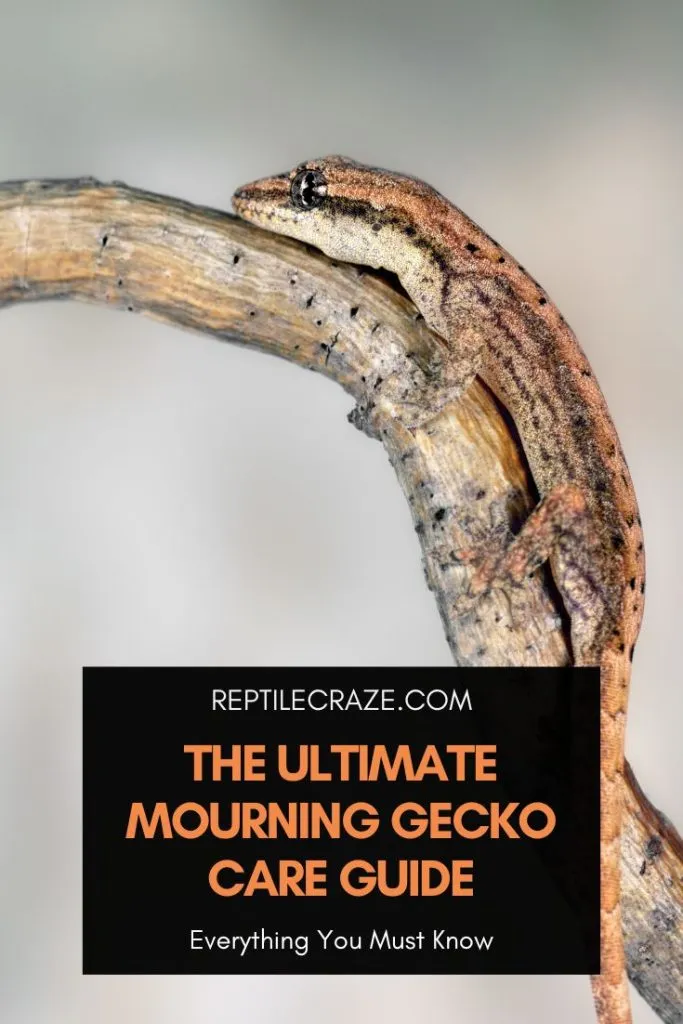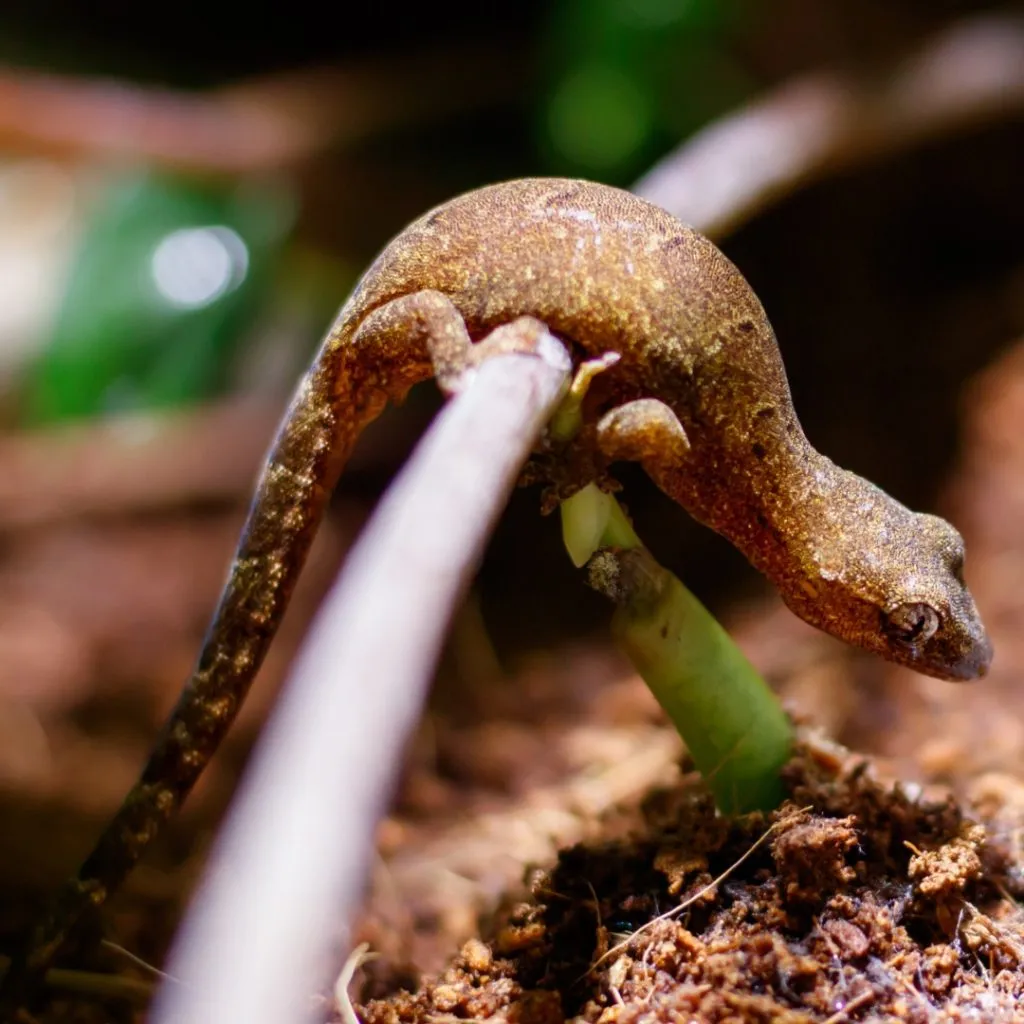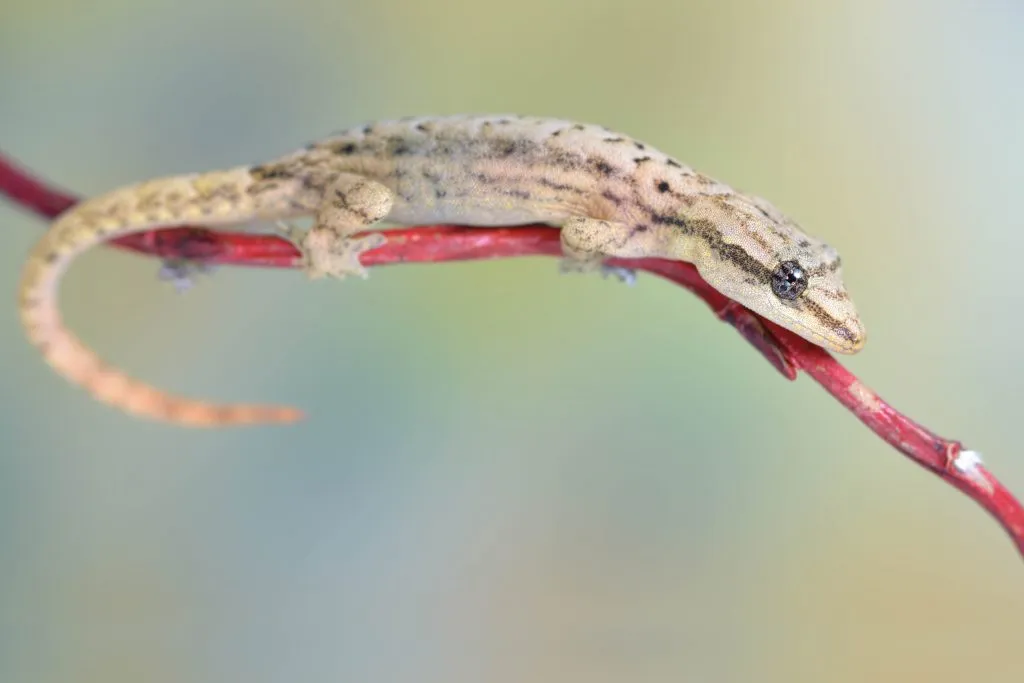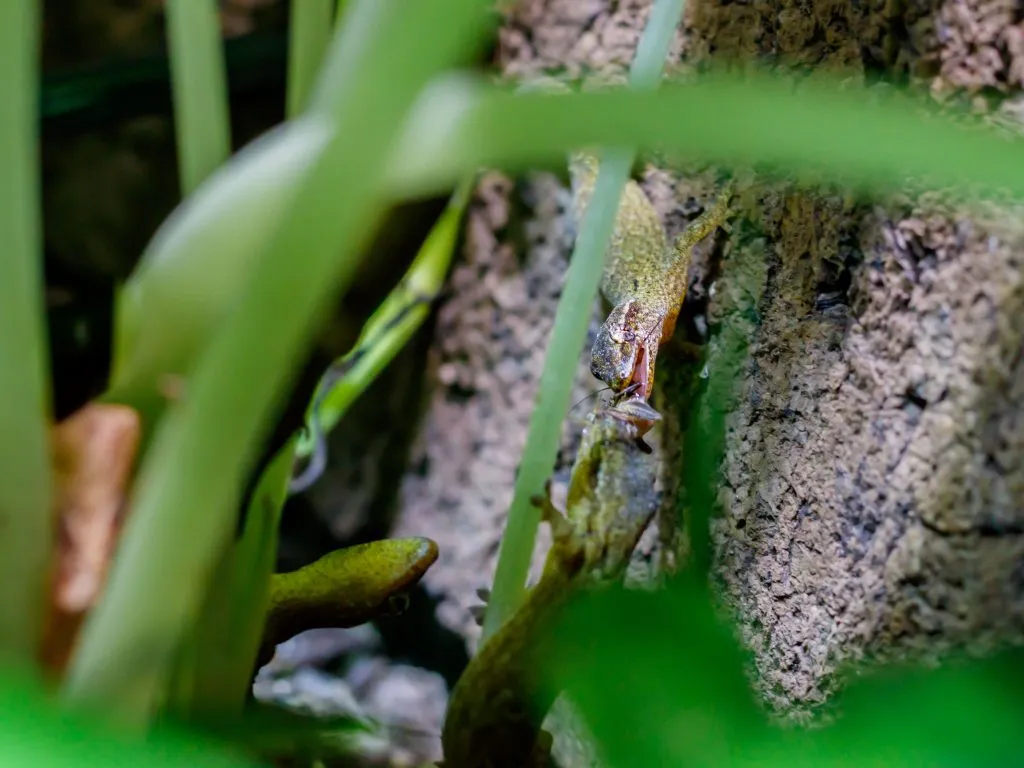
Mourning geckos are such fun reptiles to keep. Not only are they easy to maintain, but they also live reasonably long. Is the mourning gecko for you? What should you know about mourning geckos before getting one?
Mourning geckos are tiny reptiles that can live from 10-15 years. They come in many colors and tend to fire up or down their colors depending on their mood. They do not need large enclosures except if you are building a colony. They are omnivorous and extremely easy to maintain.
In this guide, we are going to talk about facts about the mourning gecko, enclosure setup, temperature and feeding requirements, and many more. So if you are interested in getting a mourning gecko, then keep reading!
Table of Contents
Mourning Gecko Care
Mourning geckos are easy to care for. Just as long as they are fed properly and their enclosure is set up perfectly, it is rare for you to encounter problems.
Of course, you should also socialize your mourning gecko by means of handling training.
So let’s start with some basic facts, and then we show you a shopping list. Afterward, we explain topics like feeding, handling, and
The mourning gecko is a tiny gecko that has smooth scales. That’s why they are also called smooth-scaled geckos. They can get up to 4 inches long and in captivity, they can live for 10 to 15 years. Despite their size, they are also hardy reptiles.
They originated from tropical and coastal areas such as Maldives, Sri Lanka, Myanmar, India, Thailand, Taiwan, Japan, Philippines, Guam, Western Samoa, etc. Therefore, they need to be in a humid environment.
They also come in different morphs and colors.
The regular mourning gecko has black and brown markings, while other morphs include pale yellow and even the rare lavender. You can read this article to learn more about mourning gecko morphs.
Mourning Gecko Fact: All mourning geckos are female. They are also called as such as it was perceived that they were in mourning for the absence of mates.
Mourning Gecko Enclosure

If you plan on just getting one mourning gecko, it will thrive in a five-gallon
As they are great escape artists, you should make sure that the enclosure is secure by having an additional screen or using silicone and foam to cover small spaces.
This terrarium kit from Exo Terra will work well, and since it is also vertical, your mourning geckos have enough space to climb branches and vines.
If you want to learn how to set up the perfect enclosure for your mourning gecko, check out this article.
Mourning Gecko Temperature Requirements
Mourning geckos are cathemeral, meaning they are active at irregular times during the day and night. Therefore, they can still benefit from using UVB lights, especially for basking.
Since mourning geckos live in a fairly small enclosure, a 20-wattage heat lamp should be sufficient to reach the right temperatures.
Again, if you need more detailed info on this, read our mourning gecko
Here are the temperature requirements:
- Cool area: 70-75 °F
- Warm area: 80-85 °F
- Night temperature: 65-72 °F
Mourning Gecko Humidity
Your mourning geckos will be healthy with a humidity level range of 60%-70% at a minimum and 80%-90% at a maximum.
You can achieve this by misting the enclosure daily, but make sure that there is still proper ventilation so as to prevent fungi and mold growth.
You can use this spray bottle to mist the enclosure. Make sure to mist once or twice daily because mourning geckos tend to not drink from their water bowls. Instead, they drink from the water droplets left from the misting.
As humidity levels are vital, you need a thermometer that measures humidity. Here is a good one from Zoo Med. You can measure humidity with this as well as the temperature.
Mourning Gecko Fact: Mourning geckos do not have eyelids. They use their tongues to clean their eyes.
Mourning Gecko Enrichment
Mourning geckos are fairly energetic and they also love to climb vertical surfaces. Therefore, they can benefit from having vertical branches in the enclosure. They also love to hide so providing them with bark tubes will make them happy.
Here are some suggestions:

Feeding Mourning Geckos
As mourning geckos are omnivorous, they will benefit from a diet of fruits and small insects. You just have to adjust the serving size based on their current size. Further, you should also have an established feeding rotation and schedule.
It is considered to be a complete diet of mourning geckos if you feed them a gecko diet mix. However, to have a balanced diet, it is still better to provide them with feeder insects every now and then.
Further, you should also add Calcium to their diet for bone growth.
This may be a bit confusing, so here is a guide on what you can feed them as well as the portion size.
Best Tank Mates For Mourning Geckos
The best
Although they still establish some sort of social hierarchy, it is rare to see them exhibit aggression against each other.
There may be some arching of the back or wiggling of the tail when they try to size up one another, but in many cases, these behaviors do not result in injury.
As they thrive in a naturalistic enclosure, they can also be housed with dart frogs and even crabs! You can learn more about the best tank mates for mourning geckos by reading this article.
Mourning Gecko Fact: They can regrow their tail when it gets cut off.
Handling Mourning Geckos
However cute mourning geckos are, handling should only be restricted to handling training as well as when it is necessary.
The reason behind this is that they are so tiny and delicate as well as very fast that you may risk injuring your mourning gecko.
The worst-case scenario is they may jump out of your hand and just fall flat to the floor. They can get startled easily so handling them can be a hassle, but there are tips and tricks that you can try.
You will find our guide to handling mourning geckos very helpful if you plan on starting handling training. It is also important to understand their body language so handling will not be too stressful for them.
Breeding Mourning Geckos
If you plan to breed mourning geckos, you will find out that it is going to be an easy endeavor. You may be surprised to know that all mourning geckos are female.
They just need another female in order to stimulate each other and voila, you now have two mourning geckos that are gravid.
As amazing as this sounds, this can also be an overpopulation problem because they can lay eggs every 4-6 weeks. You can check out this article if you need guidance on mourning gecko breeding as well as egg care.

Where To Buy Mourning Geckos
Mourning geckos are not hard to find reptiles. They breed like crazy so it is easy to find a breeder that has a lot of different morphs.
It is better to get an adult mourning gecko instead of a hatchling, as adults are already used to certain feeding practices.
On the contrary, when you get hatchlings, you may need a bit of trial and error to figure out which feeder or mix they are open to eating. Mourning geckos can be picky eaters.
This article lists reputable breeders where you can find healthy mourning geckos.
Final Thoughts
You are now equipped with enough knowledge to finally get your mourning gecko. Just remember to set up the enclosure properly and keep up with the feeding schedule. Keep an eye on that humidity!
Mourning geckos are great reptile pets to keep and you will soon find that out for yourself as you watch them become active in their enclosure. No matter what morph you get, you will surely fall in love with this tiny and gentle reptile.
- Enchi Ball Python: A Unique and Stunning Morph of Python regius - March 27, 2025
- Emerald Tree Monitor: The Enigmatic Green Guardian of the Rainforest - March 26, 2025
- The Egyptian Cobra (Naja haje): A Fascinating Serpent - March 25, 2025
